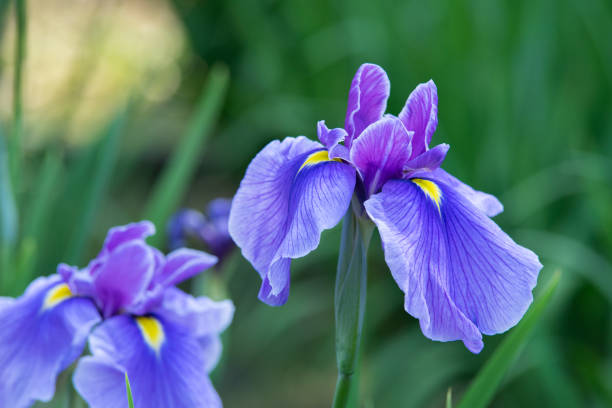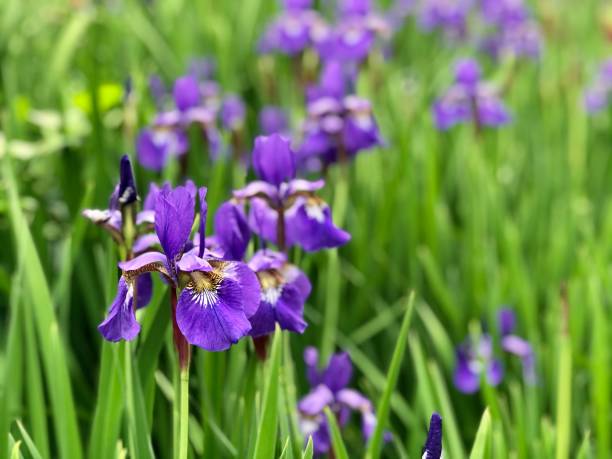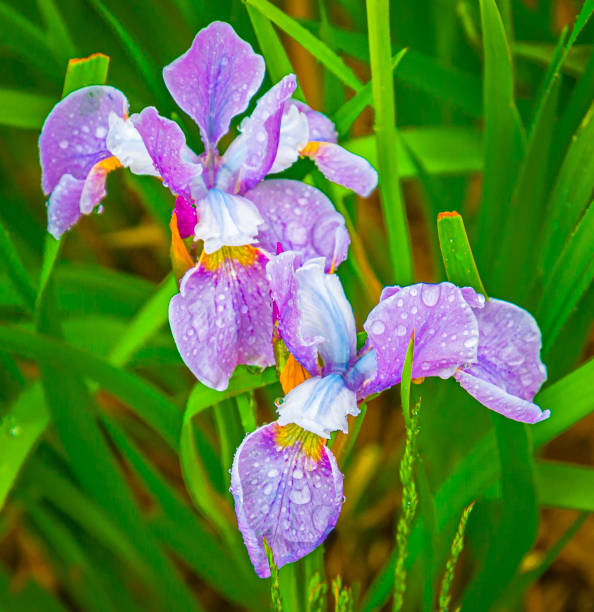Do Iris Bloom More Than Once?
Iris can bloom more than once, especially in mild climates. Iris should last 5 to 7 days if properly cared for. There are a few easy steps you can take to get the most out of your flowers when you get home. Put the flowers in water when you get home so they can drink while you prepare the vase.
A vase of fresh irises can last anywhere from four to eight days if kept in water. Keep the flowers in a cool place if you want to extend their vase life, but you’ll need to provide a little warmth if you want unopened buds to open.
Everything about this plant is small, standing at only 10-12 inches tall. There are usually blooms in early May that last for two weeks.

Table of Contents
Types of Reblooming Iris
- Rebloomers– refers to irises that bloom twice or more times per year, also known as “remontants.”
- Cycle Rebloomers– bloom in the Spring, then go dormant in the summer before blooming again in the fall.
- Repeaters– flowers can bloom for up to two months after their first spring flush has faded.
- All-Season rebloomers– have flowers that bloom at different times during the year.
Planting Iris Varieties Depending on When You Want Them To Bloom
| Dwarf Bulbous | Late winter/early Spring blooming variety |
| Dwarf Bearded | Early to Mid-Spring |
| Tall Bearded | the best time to plant is mid-to-late Spring, though this varies slightly by variety |
| Siberian | Late Spring to early summer |
| Dutch | Late Spring to early summer |
| Japanese | The beginning of summer |
| Louisiana | From the beginning of summer to the middle of summer |
| Reblooming Bearded | Midspring and again in late summer to early fall |

How to Grow Reblooming Irises
Consider Your Zones
Many people who garden in Zones 3 and 4 don’t see a lot of reblooming. A variety called “Immortality,” which is said to bloom as far north as Zone 3, is an exception. If you live where the weather is always hot, you may not see a second bloom. Most varieties start blooming again when the temperature drops. So be patient: Some types of plants won’t start blooming again for a few years.
Caring Tips for Rebloomers
Reblooming irises require more attention than regular irises because they work harder throughout the growing season. According to the package directions, use a low-nitrogen fertilizer (one with a small first number, such as 5-10-20). Keep the fertilizer away from the exposed rhizomes to avoid burning.
Feed the plants in the Spring as they grow and again in the fall. Water every other week and keep the plants from going into dormancy. Keeping your rebloomers apart from your regular irises is a good idea because too much water can kill regular irises.
Divide reblooming irises more frequently than regular irises because they grow faster. Dividing reblooming irises every two or three years is an effective way to keep them from becoming overcrowded. Still, only the outer rhizomes should be divided, as the healthy older parts of the plant should be left intact. Using 12- to 18-inch spacing, replant the small rhizomes.
It is possible for rebloomers, like other irises, to be attacked by iris borers or infected by various diseases.

How To Get Iris To Bloom Again
Sunlight Conditions
The conditions surrounding your irises must be bright and sunny to bloom. Increasing the number of shades on your iris can help to alleviate the situation in question. Some plant species may necessitate at least six hours of direct sunlight per day to bloom fully.
Anything you can do to ensure that your iris plant receives plenty of sunlight will benefit you. Everything from pruning other trees that provide shade to transplanting the iris to a new location where they will receive plenty of sunlight would work wonders for the plants.
Keep an Eye Out for Depths
The iris suffers when the rhizome or bulb is buried too deeply in the soil. It is important to check the depth of the rhizome if your iris plant is not blooming. If the rhizome is too deep, it should be uprooted and replanted beneath the soil.
In some situations, such as clay soil, a portion of the rhizome should be visible above ground. Clay soils are very rigid and will not aid in the growth of iris; in fact, expecting them to bloom would be unreasonable.
Iris reblooming after being watered Appropriately
When it comes to watering, irises naturally do not require much effort on your part; however, they should be watered once a week following a successful planting season to maintain their health.
If you have reblooming irises, you must continue to water them throughout the summer, especially when there is less rainfall, until they begin to bloom again. If there is a drought, you will need to water your plants heavily. This type of water iris is designed to allow water to permeate deeply into the soil.
How to Get Rid of Faded Flowers
To properly care for your iris, it is necessary to remove faded blooms by cutting the stalks with hand clippers close to the base of the plant. Trimming flowers, just as it does for flowers, promotes better growth, beauty, and glory in irises and vice versa.
Removing faded blooms can assist the iris plant in conserving energy in their rhizomes, which can then be used for blooming rather than being exhausted during making seeds, as opposed to producing seeds. Blooms that have faded can still produce seeds, but this will come at the expense of the energy that would have been expended during the blooming process. It can also result in luxurious reblooming for rebloomers who take advantage of it.
Reduce Overcrowding in the Area Surrounding the Irises
The rhizomes will inevitably grow in size over time, resulting in clogging of the available space around them. They become overly attached, which hinders their ability to achieve success.
Remove the rhizomes from their root systems and separate them from one another. Immediately following the separation, which should be done with a knife, you can replant them in the same location. This should be done every 3-4 years because the rhizomes would have merged again by that time, resulting in another crowding. They would bloom more profusely if you successfully split them in half.
Reduce the Amount of Competition From Other Plants
Plants can be extremely greedy when it comes to the resources that they share beneath the soil. Having other plants in close proximity to your irises means that the soil’s resources, such as nutrients required for growth and blooming, will be restricted in their ability to support them.
Get rid of weeds, which is already a rule of thumb, and any other plants that you believe may be depriving your iris of essential nutrients of the soil beneath its roots. Some of the competition may result in shades that block out sunlight. Your plants’ response to these unhealthful conditions would be a failure to produce flowers.
Fertilize
They are plants, and as such, they require certain nutrients to aid in their growth and, in this case, to promote their blooming. You can fertilize them in the early Spring as soon as they begin to grow, and you can fertilize them again a month later after they have bloomed brilliantly during the summer months. Follow the instructions on applying the fertilizer to the latter, and you will not have any problems whatsoever.
